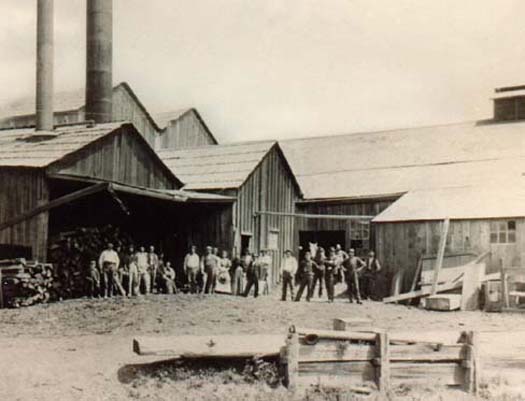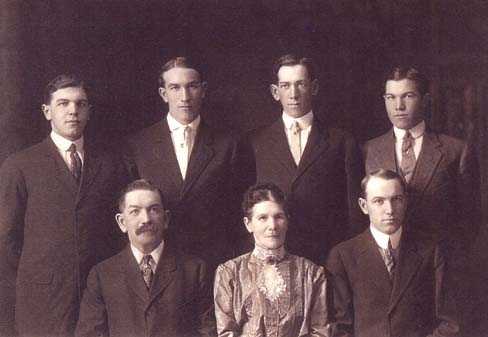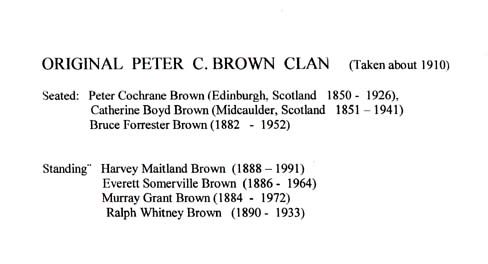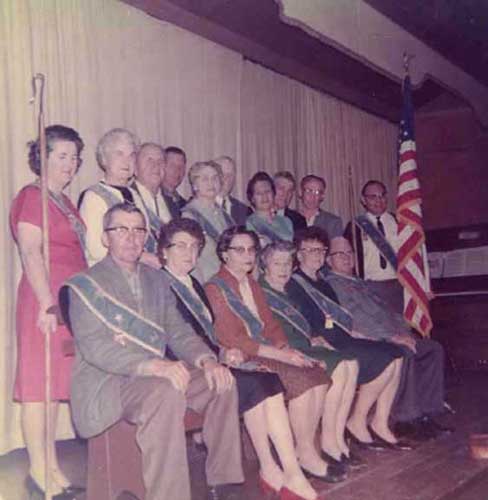Chapter 11 Additions - Country Roads of Corralitos
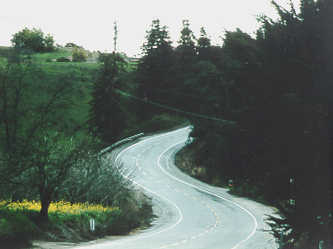
Hames Road
“Benjamin Franklin Hames was born in Rochester, New York June 1, 1823. As a young man, he took passage for California on the bark, Mazeppa. After a cruise that took him as far as the Hawaiian Islands, he went to Santiago, Chile. Here he built a flour mill and then moved to Valparaiso and erected another mill. After living in Chile for some time, he married Mary Carmen Laing. Their daughters, Frances and Lucretia were born while they were in Chile. In 1852, the family took ship for California accompanied by the children’s nurse, Mariquita, and Mrs. Hames’ sister, Andrea. The passage required about two months and such heavy storms were encountered that most of the cargo was thrown overboard to prevent the ship from foundering. Mary Carmen had brought orange trees and several varieties of flowering garden plants with her, and managed to save many of them. (Refer to page 171 in book). After landing at Yerba Buena, the family lived in San Francisco for a short time then moved to Oakland. This is where Mary Carmen’s family was living at the time. Benjamin heard news of his brother, John, who he had lost touch with. John had left New York many years before Benjamin started his travels. The Hames family moved to Soquel and had a happy reunion with John. In 1855, Benjamin bought several hundred acres in Corralitos. The family moved back and forth between Soquel and Corralitos while Benjamin continued to build flour mills. He also was elected Santa Cruz County Surveyor in 1856 and held that office for many years. He made a reputation for himself not only as an expert mechanic and builder of mills, but as a civil engineer, a great reader, and an accountant of marked ability.”
Three of Benjamin and Mary Carmen’s children were born in Corralitos between 1856 and 1866. They were Benjamin, George W. and Mary Carmen. The eldest Hames daughter, Frances, born in 1847, married Levi Hunt of Corralitos, on September 30, 1864. Levi had moved with his family (parents John and Julia Mylar Hunt) to California from Missouri in the spring of 1854. In June of 1865, he purchased two acres in Corralitos including where Corralitos Market is today.
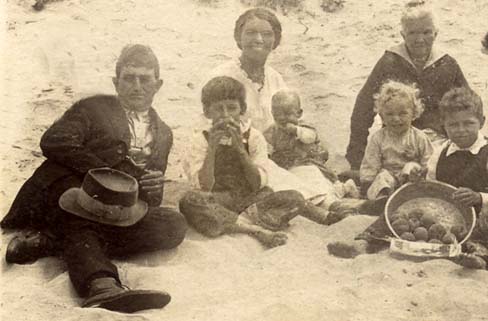
Frances Hames Hunt with her daughter Frances Price, also left to right Thomas, Johnnie, Cora, and son Frances Price. Child on right not identified.
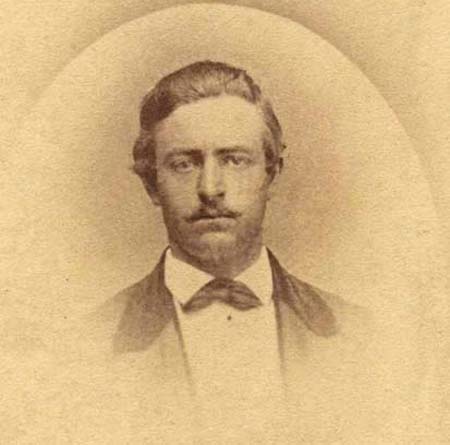
Levi Hunt June 23, 1865
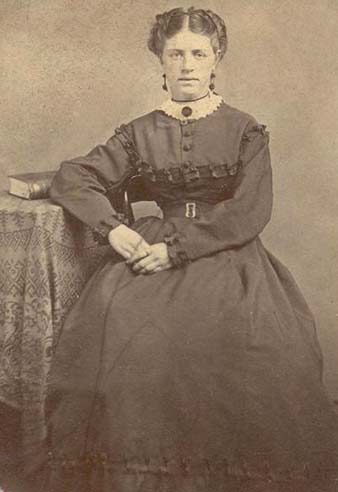
Levi’s sister Amelia (Amy) was married to George W. Post of Corralitos. She was born April 14, 1852 in Watsonville.
Levi’s sister, Elizabeth, married Robert Orton, who was originally from New York. In 1867, he was quit-claim deeded the flour mill in Corralitos that Benjamin Hames had once co-owned. Robert was the Santa Cruz County Sheriff from 1871 to 1879. It was their son’s tombstone (Refer to page 161 in book) that was found in the Corralitos Creek over a hundred years later. 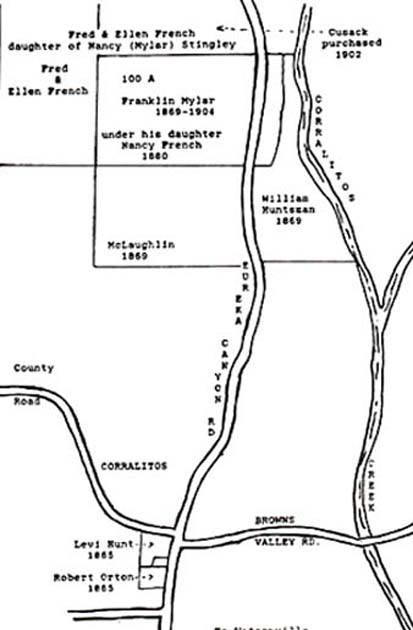
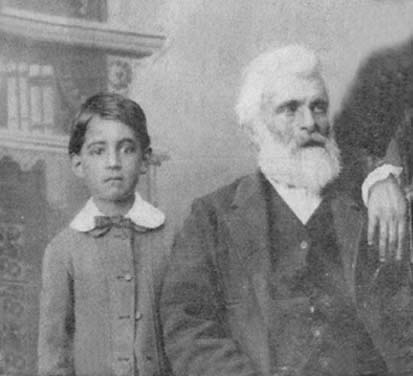
George W. Hames 1861-1913 with son George
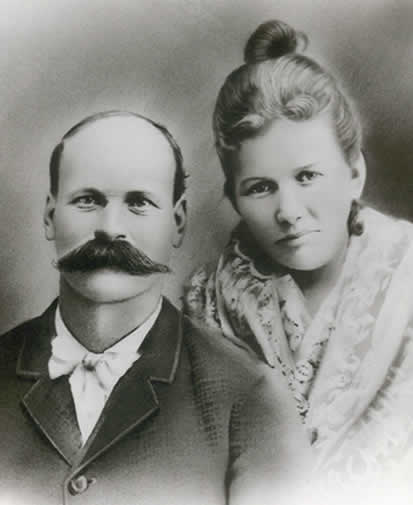
Rebecca and Albert Deleissegue
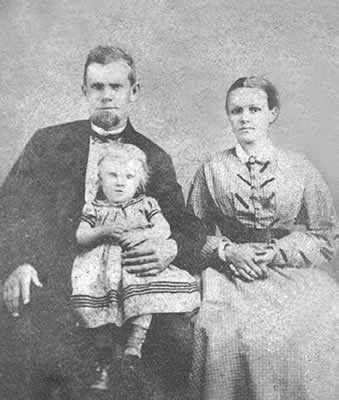
Enoch and Lucretia Mylar with daughter Hattie born in 1867
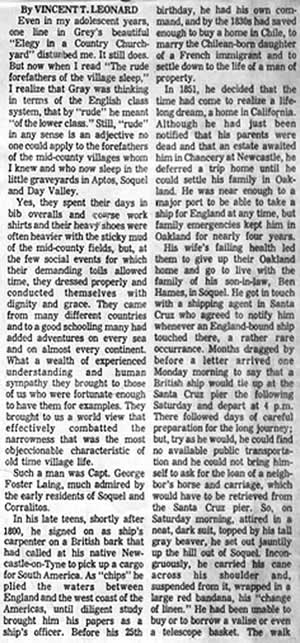
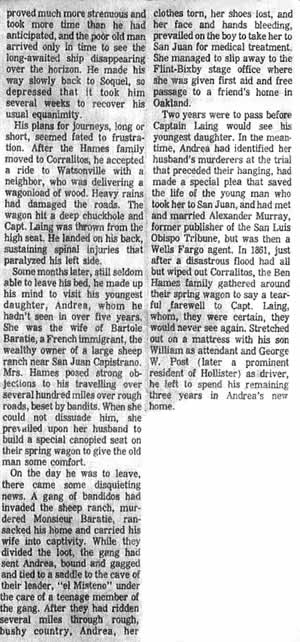
(Register-Pajaronian)

Corralitos Road 1947

Brown's Valley Road Bridge
In 1891, a substantial bridge was built across the Corralitos Creek extending what was then Mill Street to reach the east bank. Prior to this, Mill Street crossed the creek south of the bridge from about where this photo was taken circa 1919.
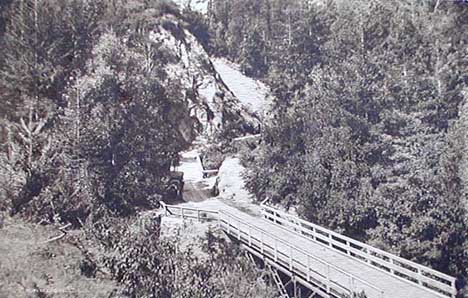
Early view of Eureka Canyon Road at the twin bridges
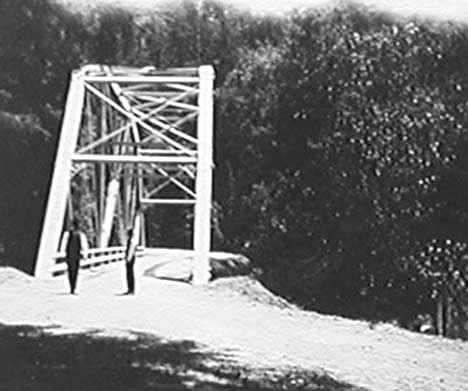
Another early bridge once the route of Eureka Canyon Road
Aldridge Lane
Aldridge Lane was named for Franklin Aldridge. Franklin was born April 20, 1826 in Louisville, Kentucky. He died in Corralitos on November 21, 1900. In 1871, he married his third wife, Anna Margaret Fallien. She was born in 1850 and died in Corralitos in 1919.
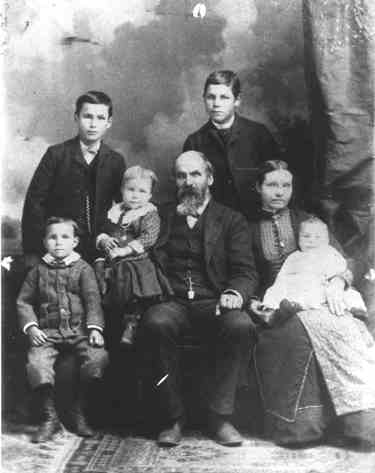
Franklin with his third family - wife Anna and children Charles, Ernest, Cleon, Lafayette, and Anna Katherine
In 1875 Franklin Aldridge granted in a deed to Corralitos District School trustees John Bradshaw and Thomas Parker and their successors a parcel of land situated in the village of Corralitos. At that time on the property was the new two-story schoolhouse.
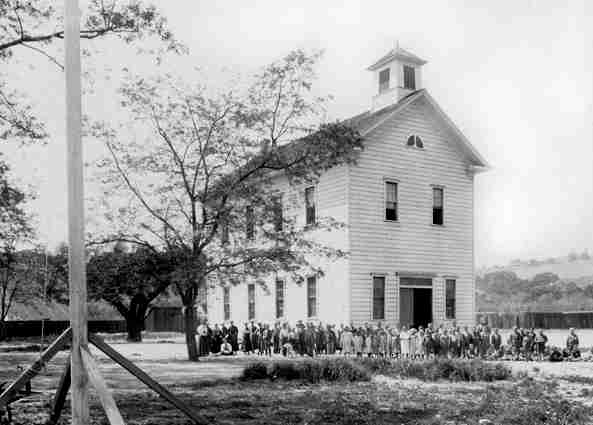
The property was "to have and to hold so long as it shall be used exclusively for public school purposes, and when it shall cease to be used for said purposes to revert to the grantor his heirs or assigns." The 1906 earthquake damaged this two-story building making it necessary to build a new schoolhouse. By 1929, this second school building was described as a "crude affair." A larger modern schoolhouse was built and continued to be in use until fall of 1951 when the present day Elma G. Bradley School opened on Corralitos Road.
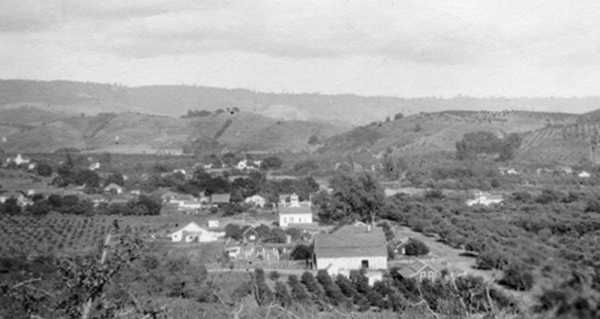
The second schoolhouse can be seen from the direction of the hill above the corner of Blake and Aldridge
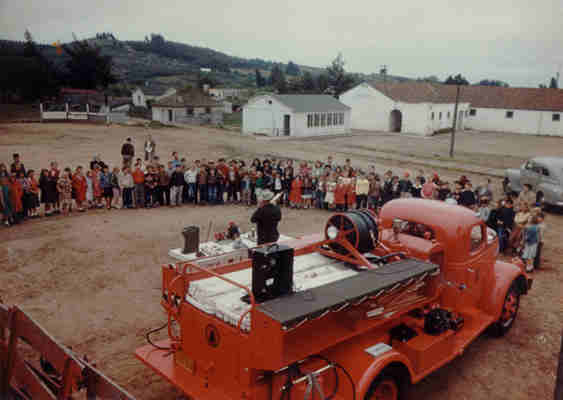
Third Corralitos school on Aldridge property 1950. Today this area is Aldridge Lane Park
Once the third schoolhouse was dismantled, the area became an open field. It had many informal uses over the years including baseball diamonds, a fenceless tennis court, basketball court, volleyball court, public parking and a horse corral. Eventually, as the population grew, the Corralitos community needed public park space and this property became considered for the development of a community park. With the help of the County and Anna Belle Aldridge Edwards, the Corralitos Valley Community Council (CVCC) undertook this project and formed Corralitos Valley Research and Education Association (CVREA) as a non-profit fund raising organization. Their first fundraiser was to match grant money that was available for parks, such as was desired for the Aldridge Lane property. In the tradition of the past, some industrious and community spirited families rallied the community into this project. Today Franklin Aldridge would be pleased to see the children at play in this lovely community park on what was once his property.
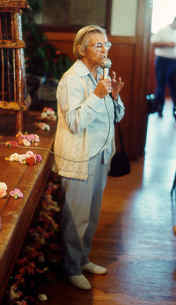
Anna Belle Aldridge Edwards, granddaughter of Franklin and Anna, kept a wonderful account of the Aldridge family.
She passed away in December 2001. Refer to Family Contacts on site map.
Brodin Lane
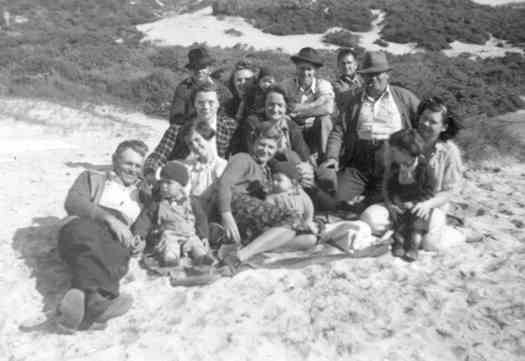
At the center of the photo, from left to right, are Ella Marie, Roberta and Ray Brodin with the Bud and Ruby Bradshaw family.
Ella Marie Brodin Fowler has shared some memories about her parents Roberta Bowen and Ray Brodin and growing up in Corralitos:
My mother and her sister Jennie lived with an Aunt Olive in Seattle when Mother attended University of Washington and got her teaching credential. Her first school was at Bissell in eastern Washington. It was a one-room school and she taught all grades. Some of the boys were larger than Mother. They had to help with harvest and planting and were only able to go to school a few months a year. There was a wood stove and a bucket and ladle for water. There was a path to the outhouses. Mother boarded with a German family. She taught there for two years until she met my father. There were box socials and the women decorated their boxes and cooked the most delectable food. Mother was interested in a young German fellow and so she worked especially hard to make her box as attractive as possible. The men bid on the boxes and got to eat with the person whose box they won. Dad outbid everyone and won Mother's. He kept up the relationship for the rest of the school year. In the summer, Mother and Aunt Jennie went to the World's Fair in San Francisco and stayed with their parents. They had a ranch in the Jack London area. There were wonderful railroad lines then and Mother and Jennie rode the train everywhere. My father wrote to Mother every day while she was gone. When she got back to Washington, he proposed and they were married October 19, 1915.
My father had a business degree from college in Coeur d'Alene, Idaho. In Washington, he had a store and post office near Davenport. The upstairs above the store was their living quarters and in the winter when it snowed they would get together and dance and have a great time. Dad played the violin and other men played instruments, too. Sometimes the snow would be so high that they were snowed in and had to spend the night. Dad bought a two-story home on a quarter section of land in eastern Washington and raised wheat. The depression hit Washington and he could not make a go of farming. He wrote to my grandparents and they tried to discourage him from moving, but he and Mother packed up their belongings and their three daughters and moved to California, anyhow. By then, my grandparents had moved to a ranch near Watsonville and we stayed with them. I went to first and second grade there. When we moved to Corralitos their fourth daughter was born.
In the summer of 1926, Mother went to summer school in San Jose and got her California teaching credential. She got a position in Corralitos teaching third and fourth grade. We had to make up a district for the school, so we lived in a cabin up in Brown's Valley for a couple of years. Dad was working for Paul Momand and doing his books. He took the car to work and the rest of us walked a couple of miles down a trail to the bus stop. There were so many wild berries and wild flowers that it was an interesting walk and Mother knew the names of all the trees and flowers. It was like camping there because we had to haul water from the creek and use kerosene lamps, but all of the time we lived there none of us ever got sick or missed a day. There was poison oak and we did not get it, either.
I was in Mrs. Munson's fifth grade because Mother did not want two of her daughters in her room at the same time. I skipped the fourth grade and did not know how to multiply or divide. My first report card had a red D and my father worked with me for the rest of the year to do story problems and everything else. When we were in Mrs. Munson's room she had us play in a harmonica band. We would go to San Francisco and play on KGO. It was in her room that we listened to the National Broadcasting Music Hour. They had quizzes and once they gave a five-dollar gold piece if we could identify all of the instruments correctly. I could not believe that I got them all right and won the gold piece. It was a prized possession of mine, but when we went off the gold standard in 1933 I had to turn it in. I bought my class ring with the money.
When we were in Mrs. Bradley's seventh and eighth grades she took us to Sunnyvale to see the Macon dirigible and we got to go into the hangar where it was moored. It was such a wonderful experience. She also arranged for us to play basketball at Amesti and other schools. Each spring there was a playday at Soquel School and we went as a school and had all kinds of activities. When we were in the old school, the playground was divided and the girls were on one side and the boys on the other. By 1930 the new school was built, just before we graduated. Our graduation exercises were held in the Ceschi hall and we dressed up in pretty clothes and received baskets of flowers.
We belonged to 4-H club and the girls took sewing from Mrs. Ceschi. She was a stickler for perfection. We were not allowed to work on our project except at her place. We learned to hem dish towels and when I got older I made a light green, lined, wool suit with bound button holes and was able to model it in Davis at our convention. We went to various places for our meetings.
In the summertime, we picked berries and cut cots. Irene and Jim Work had a drying shed and we went each day and cut cots all day for 10 cents a box. I was never able to make more than a dollar, as we were not to slip pits, as that would make slabs of the fruit. When we got a box of Moorparks we were delighted as they were large and you could cut a box in no time, but we didn't get Moorparks too often. We went to 4-H camp at Camp Loma up near Loma Prieta. There we had crafts and swimming and hiking. We took turns working at the tables. It was great fun. I never wanted to go home. We did not have sleeping bags. We just dug a hole for our bottoms and put straw down and our blankets. In the morning we would put on our bathing suits which we had hung on bushes and went swimming before breakfast.
When we lived at the Manchester place on Brown's Valley Road all of us kids would go to the Free Methodist Church on Sunday nights. Max Weedon was the pastor and the church was just across from where we lived. I do not remember if it was a youth group or just
regular evening service. It was very simple times when we were growing up. After we moved to the Rocco house across from Scott's store (now Corralitos Market), we girls would sit on the fence by the flume and wait for the boys to come by. There were Ed, Ray, and Elmer Pybrum, Elvin Bradley and others. When Ed got old enough to drive we would go all over the roads in Corralitos. One time we were on Hames and he kept going faster and faster and we were all yelling. An axle broke on the car and we all got out. We were not too far from home. I fell and skinned my knees. It seems I had skinned knees most of the time. Mother used to say I would probably have skinned knees when I got married.
My father and all of the men in Corralitos worked to build the Grange Hall and each of the men took turns at being master. My dad was the second master. We had some wonderful times in that hall. I did not belong to Grange as I was a Rainbow Girl and our meetings were the same night. My mother and sisters were in the drill team and held various offices through the years. It was such fun living and growing up in Corralitos. Everyone knew everyone and we did all kinds of things together. Before I was married, the folks bought the Jenkins place at 147 Hames Road. There were two and one half acres. When Dad died, Mother sold two acres to Mr. Winterholder. He was going to build a home on the bottom part of the property. He sold the property to Ed Pybrum who developed it for other homes. He cut a road through and named it Brodin Lane.

The Corralitos Grange Hall and Brodin Lane development circa 1969.
Crow's Nest
By Barbara Hatton Wall
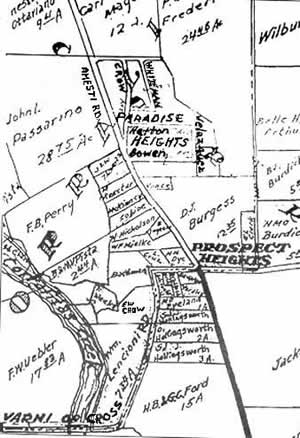 It was depression time in the 1930s and people were having a difficult time finding work and caring for their families. Mr. Ed W. Crow bought acreage in an apricot orchard off of Amesti Road. He sold lots for $1.00 down and $2.00 a month. He named the property Paradise Heights. It didn't retain that name because it was nicknamed Crow's Nest. This is the name that has stayed with the area over the years. It was depression time in the 1930s and people were having a difficult time finding work and caring for their families. Mr. Ed W. Crow bought acreage in an apricot orchard off of Amesti Road. He sold lots for $1.00 down and $2.00 a month. He named the property Paradise Heights. It didn't retain that name because it was nicknamed Crow's Nest. This is the name that has stayed with the area over the years.
Mr. Crow's autobiography from Referendum Reader's section of newspaper: c1940s
"I was born in Pike county, Missouri, January 9, 1856; crossed the plains to California in1857; farmed 50 or 60 years and farming went on the bum so I quit farming and tried the real estate business when Cleveland was president. I had 300 acres of alfalfa, 80 head of horses and mules, 100 head of hogs, 40 or 50 turkeys, 100 chickens, a good stallion, a thoroughbred jack and I came to Watsonville about seventeen years ago with a model T Ford and about $2,000.
Since then, I have sold lots to about 60 poor people for $1.00 down and $2.00 a month. On June 14, 1941, I went back to Missouri on the train to see my sister and nephew, Governor Lloyd Crow Stark of Missouri. The governor gave me a nice cane (pearl handled and inscribed) and my sister gave me a new hat and a nice valise. Coming back, I stopped off to see my four boys who have made a barrel of money the last year around the army camps. They told me if I would give my old car to W.T. Crow who runs the vinegar works near Capitola they would give me a late model eight cylinder car, so I drove the new car up from L.A. and gave the old car to my oldest son, Wyman. Now I am out of debt and I have an income of about $80 a month. I am living all alone, keep bachelor's hall, and I feel lonesome at times and if any old maids or widows that have got an income ¼ as much as I have got I would like to get acquainted with them. Ed. W. Crow Rt.5, Box592"
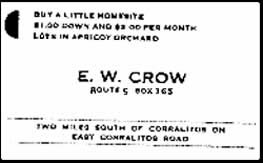 Unfortunately, Mr. Crow died when his two-story house caught fire and burnt down sometime in the early 1940s. According to the newspaper, he was 86 at the time. The house burned to the ground after 10:00 on a Friday night. His remains were taken from the home to Mehl's in Watsonville. Deputy Sheriff Lowell Roundtree gave the information of the fire and death to the newspaper. Unfortunately, Mr. Crow died when his two-story house caught fire and burnt down sometime in the early 1940s. According to the newspaper, he was 86 at the time. The house burned to the ground after 10:00 on a Friday night. His remains were taken from the home to Mehl's in Watsonville. Deputy Sheriff Lowell Roundtree gave the information of the fire and death to the newspaper.
The streets in Mr. Crow's subdivision were named after him and families living there; Crow, Bowen, Hatton, Whiteman, and Velazquez (sic). Mr. Crow's two-story house had been on the right hand side of Varni Road beyond Mattie Dye's Home Grocery Store that was situated on the corner of Varni and Amesti Roads. Mr. Crow's name for the subdivision, Paradise Heights, was certainly appropriate for the area. Others came to refer to the area as Crow's Nest, which became a nickname fondly used. For a time, people from other areas referred to the place as "Little Hollywood" in making fun of the many poor people arriving from different places looking for a place to live. This name was used as a derogatory term in the early days of settlement, but did not stick. "Crow's Nest" it was and always shall be, thanks to a generous man having made it possible.
Read more about Crow's Nest in Growing Up in Corralitos section
|


